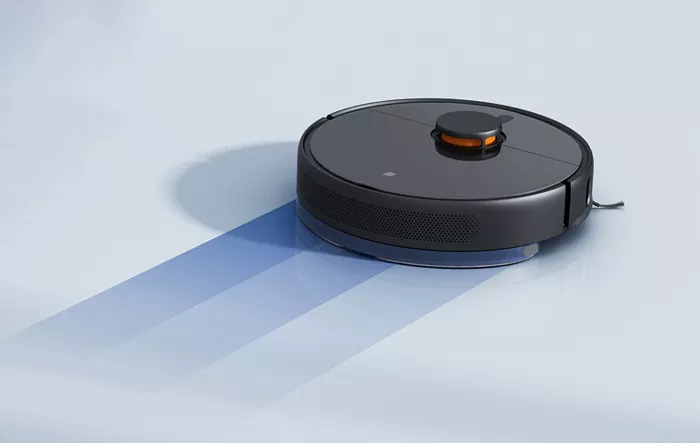Steam cleaning has gained popularity as an effective and eco-friendly cleaning method. As a professional steam cleaner, I can confidently say that steam cleaning offers numerous benefits, from deep sanitation to chemical-free cleaning. However, like any method, it has limitations. This article explores steam cleaning in detail, covering how it works, its advantages, potential drawbacks, and best practices for optimal results.
What Is Steam Cleaning
Steam cleaning uses high-temperature vapor (typically between 175°F and 300°F) to loosen dirt, kill bacteria, and dissolve grime without harsh chemicals. The steam penetrates porous surfaces, breaking down contaminants, while a vacuum or microfiber cloth removes residue.
How Steam Cleaning Works
Water Heating: A steam cleaner heats water in a boiler, converting it into pressurized steam.
Steam Application: The steam is released through a nozzle or brush attachment, targeting surfaces.
Dirt Removal: Heat loosens grime, while agitation (brushing or wiping) lifts away debris.
Sanitization: High temperatures kill bacteria, dust mites, and mold spores.
This process makes steam cleaning highly effective for various surfaces, including floors, upholstery, and kitchen appliances.
Benefits of Steam Cleaning
1. Deep Cleaning and Sanitization
Steam reaches into microscopic crevices, removing embedded dirt that traditional mopping or wiping misses. The high heat (above 212°F) kills:
- 99.9% of bacteria (E. coli, Salmonella, Staphylococcus)
- Dust mites and allergens (helpful for asthma sufferers)
- Mold and mildew spores (preventing regrowth)
Unlike disinfectant sprays, steam sanitizes without leaving chemical residues.
2. Chemical-Free Cleaning
Many households seek non-toxic cleaning solutions. Steam cleaning uses only water, making it safe for:
- Homes with children and pets
- People with chemical sensitivities
- Eco-conscious consumers
3. Versatility Across Surfaces
Steam cleaners can be used on:
- Hard floors (tile, laminate, sealed hardwood)
- Carpets and rugs (with appropriate attachments)
- Upholstery and mattresses (removing stains and odors)
- Kitchen appliances (degreasing ovens, microwaves, grills)
- Bathrooms (cleaning grout, showers, toilets)
4. Cost and Time Efficiency
- Reduces cleaning product expenses (only water is needed)
- Speeds up cleaning (no need to wait for chemicals to work)
- Extends surface lifespan (gentler than abrasive scrubbing)
Potential Drawbacks of Steam Cleaning
1. Not Suitable for All Surfaces
Excessive moisture can damage:
- Unsealed hardwood (causes warping)
- Delicate fabrics (silk, some upholstery)
- Porous stone (marble, limestone)
- Electronics (moisture can cause malfunctions)
Always check manufacturer guidelines before steaming.
2. Requires Proper Technique
- Incorrect use can spread dirt if not wiped immediately.
- Over-wetting surfaces leads to prolonged drying times.
- Inadequate steam pressure may not sanitize effectively.
Professional-grade steam cleaners offer better control than consumer models.
3. Initial Investment Cost
High-quality steam cleaners range from 100 to 800+. However, long-term savings on cleaning products justify the expense for frequent users.
Professional Steam Cleaning vs. DIY Methods
Why Hire a Professional
- Commercial-Grade Equipment – More powerful steam, faster drying.
- Expertise in Handling Different Surfaces – Prevents damage.
- Deep Stain Removal – Professionals know how to tackle stubborn grime.
When DIY Steam Cleaning Works
- Light maintenance cleaning (weekly floor sanitization)
- Smaller areas (spot-cleaning upholstery)
- Budget-friendly upkeep
For deep cleaning (e.g., carpets after flooding), professionals are recommended.
Best Practices for Effective Steam Cleaning
1. Pre-Cleaning Preparation
- Vacuum or dust surfaces first to remove loose debris.
- Pre-treat stains (for tough grease or pet stains).
2. Adjusting Steam Settings
- High steam for hard surfaces (tile, grout).
- Low steam for delicate fabrics (curtains, upholstery).
3. Proper Drying Techniques
- Use microfiber cloths to absorb excess moisture.
- Ensure ventilation to speed up drying.
4. Regular Maintenance of Equipment
- Descale the boiler (mineral buildup affects performance).
- Clean attachments to prevent clogging.
Conclusion
From a professional perspective, steam cleaning is one of the most effective and sustainable cleaning methods available. It provides deep sanitization, reduces chemical use, and works on multiple surfaces. However, proper technique and equipment selection are crucial to avoid damage. For routine home cleaning, a mid-range steam cleaner is a smart investment. For deep cleaning and commercial use, hiring professionals ensures optimal results.Ultimately, steam cleaning is a powerful tool in modern cleaning—when used correctly, it delivers unmatched hygiene and efficiency.
Related topics:

